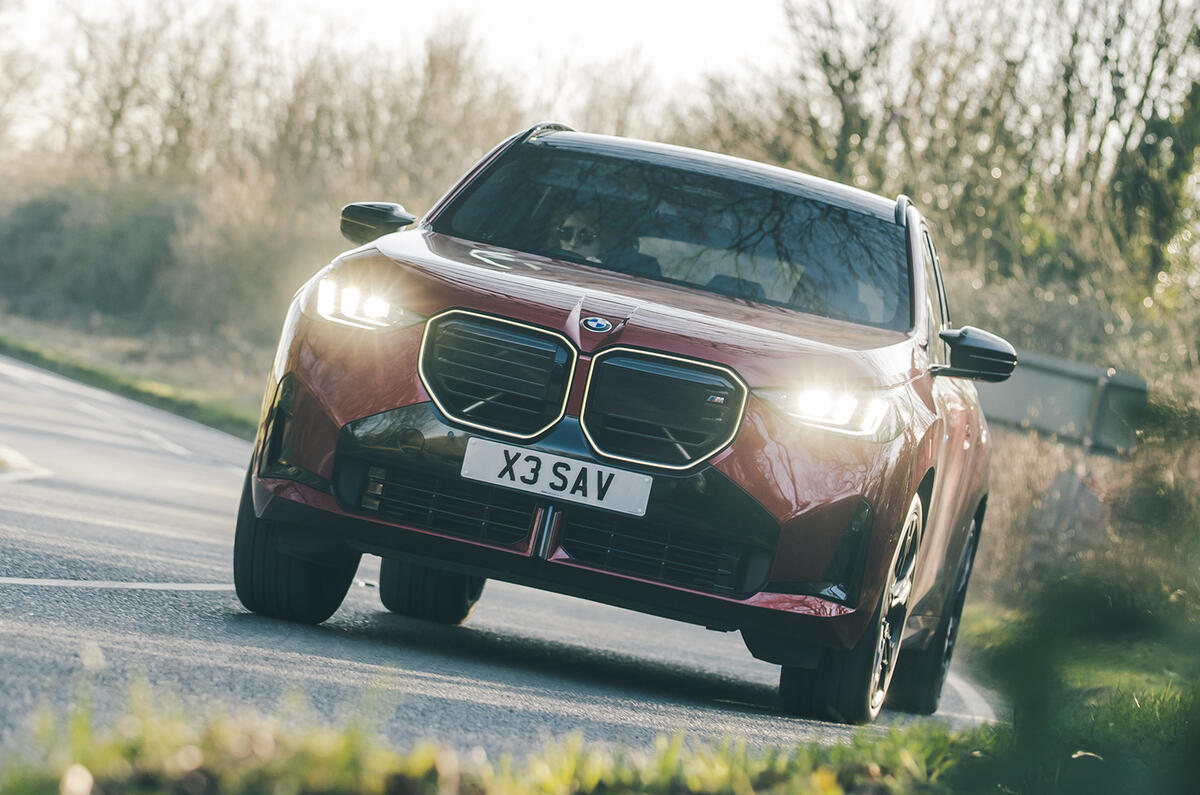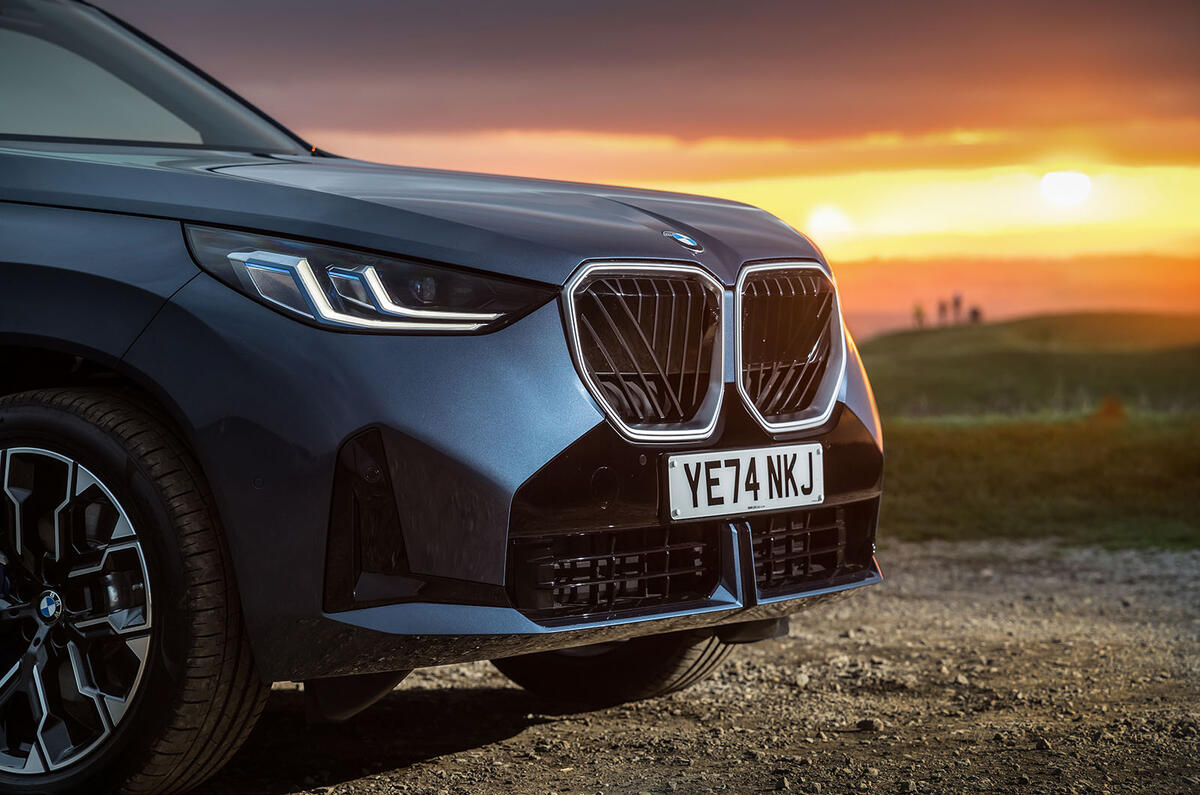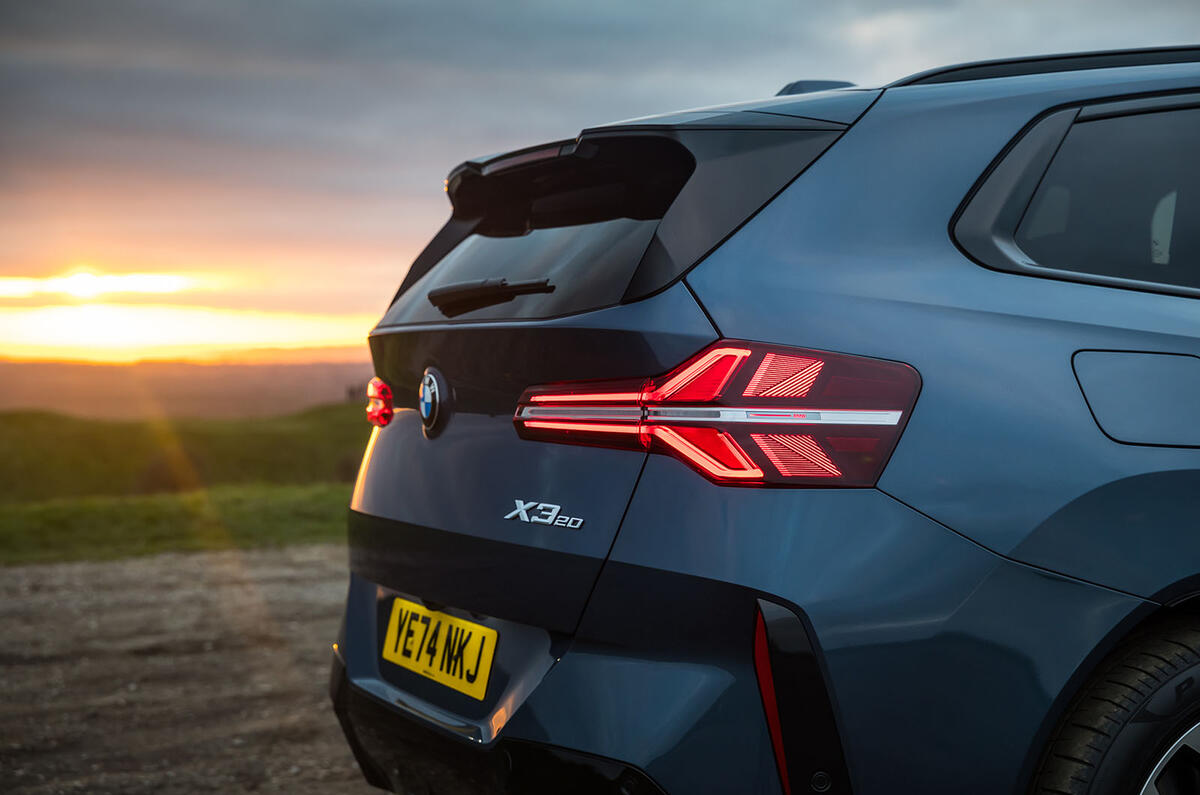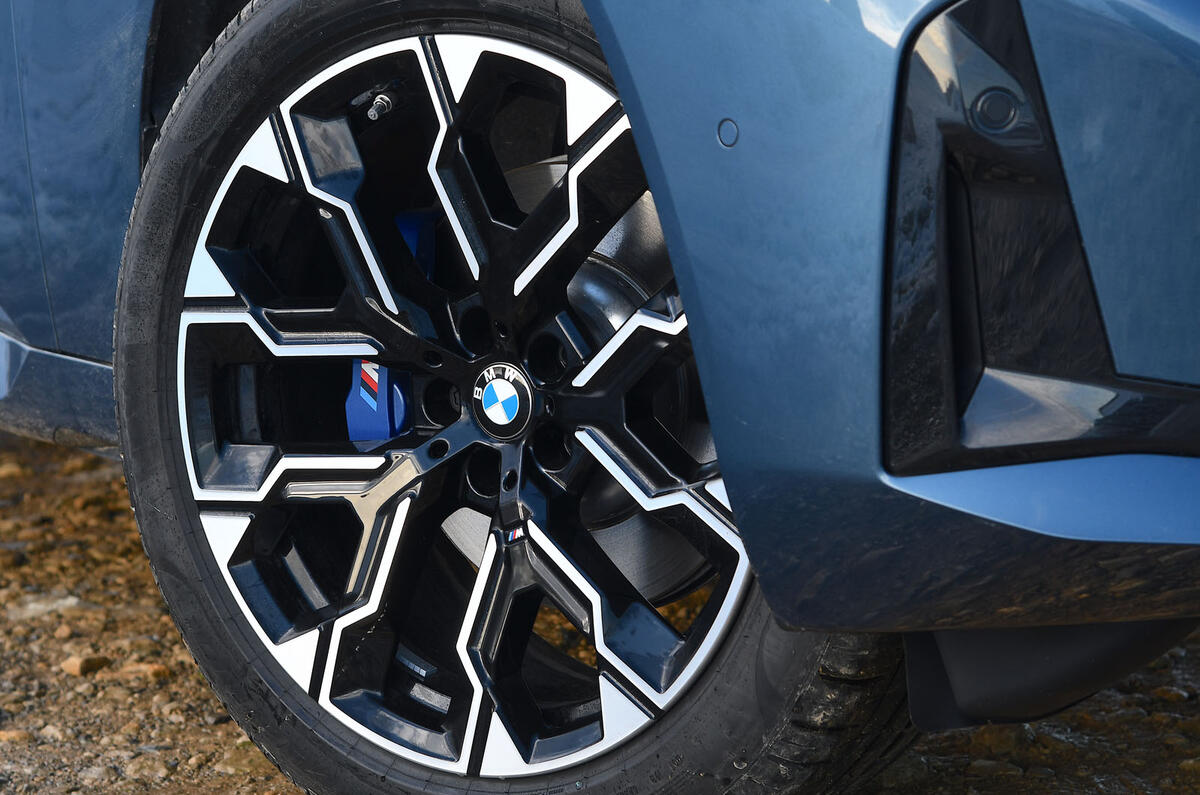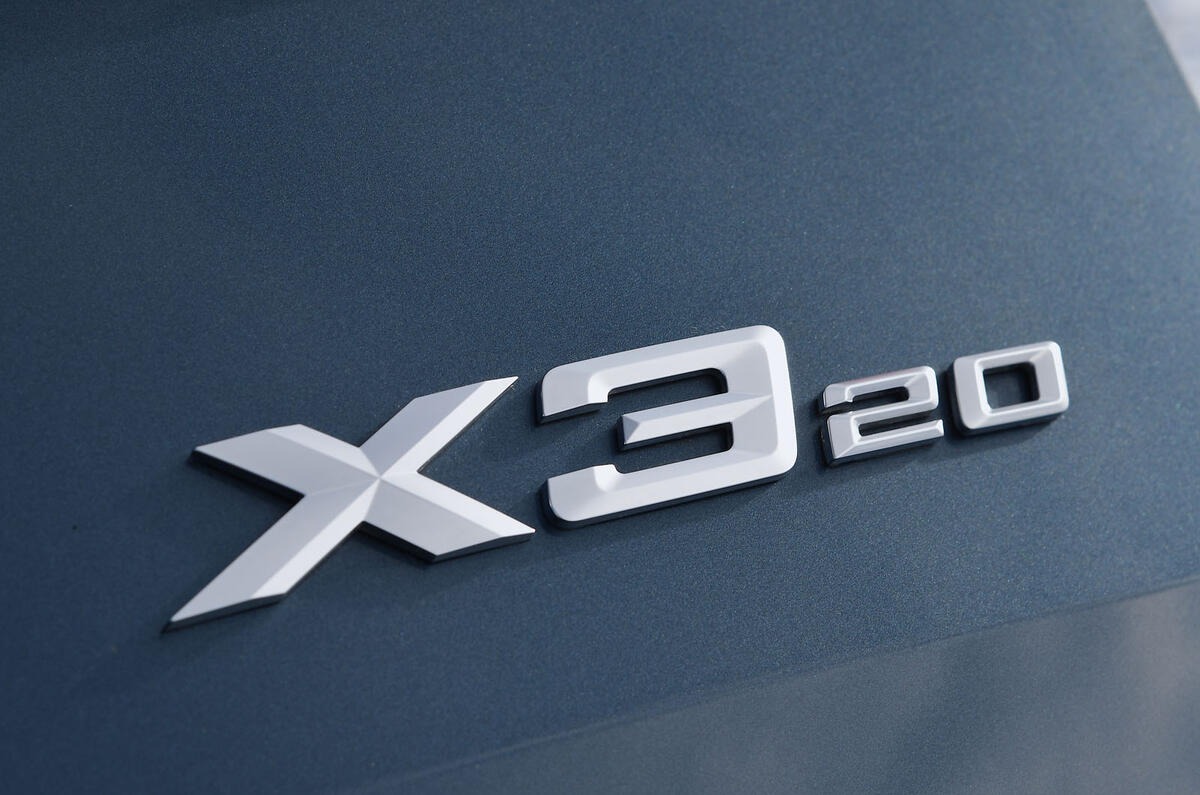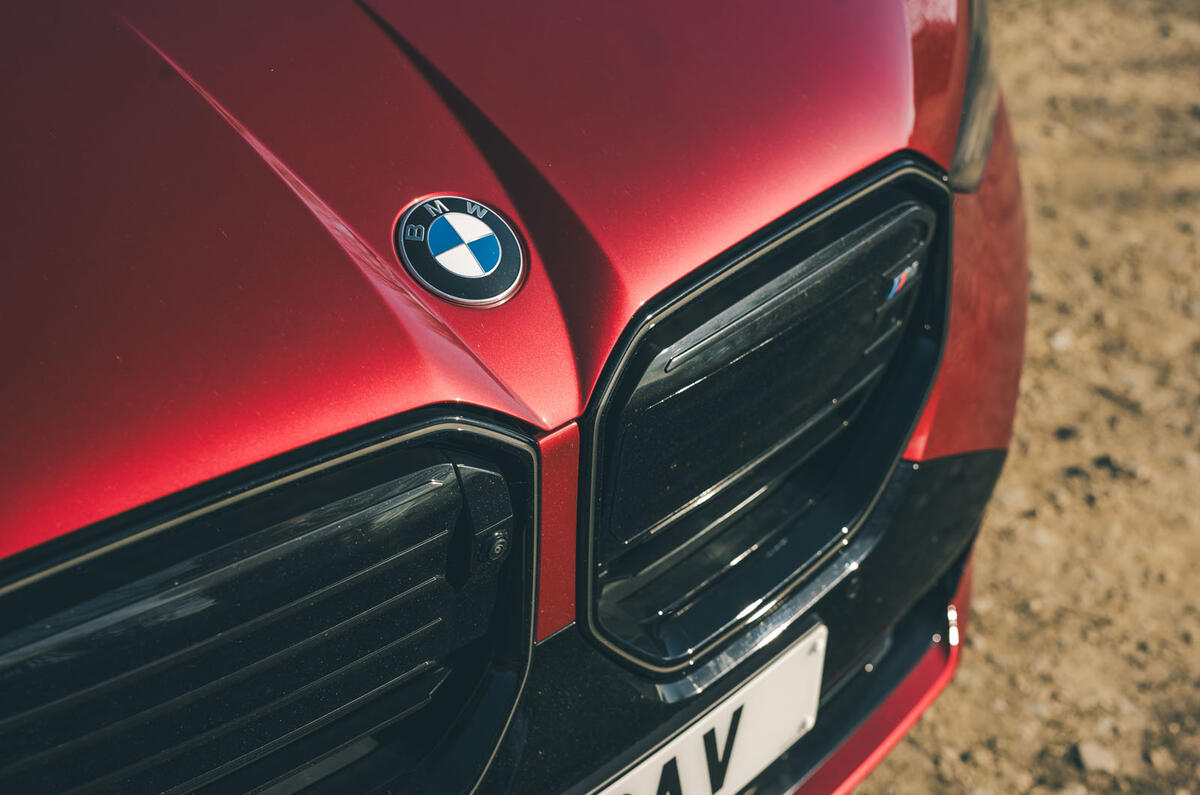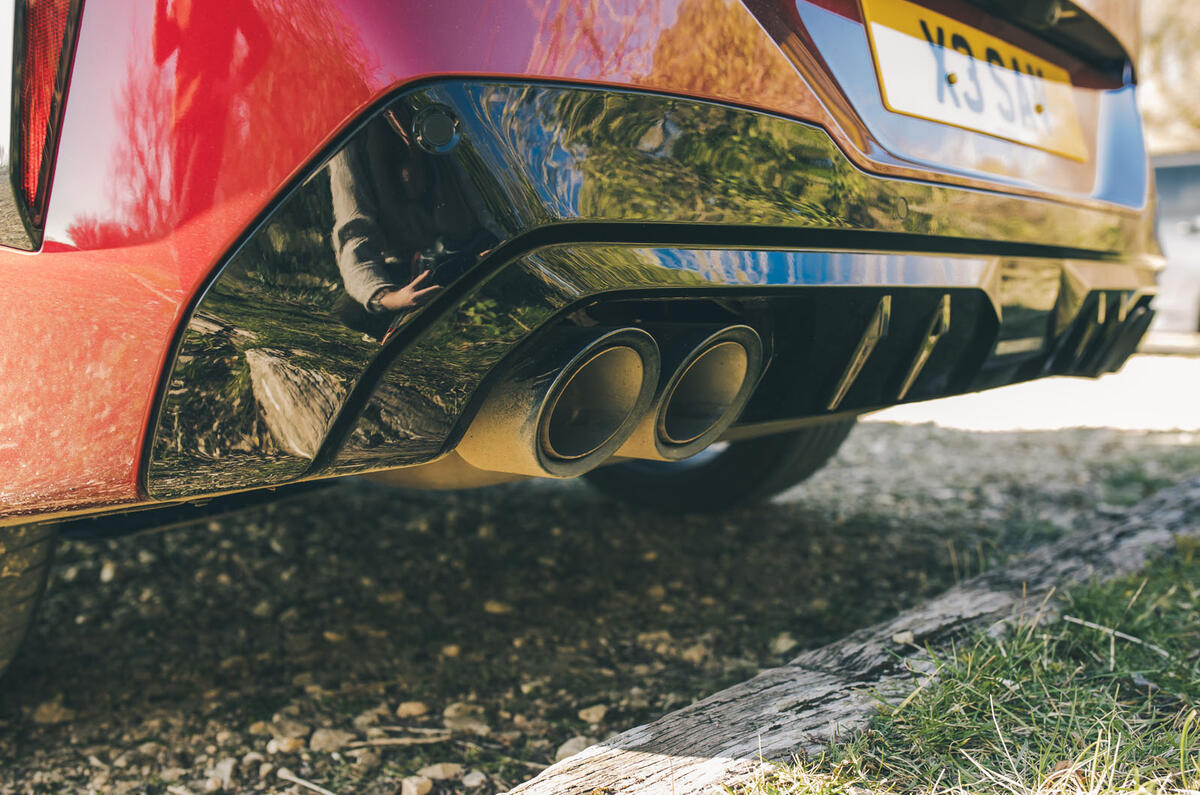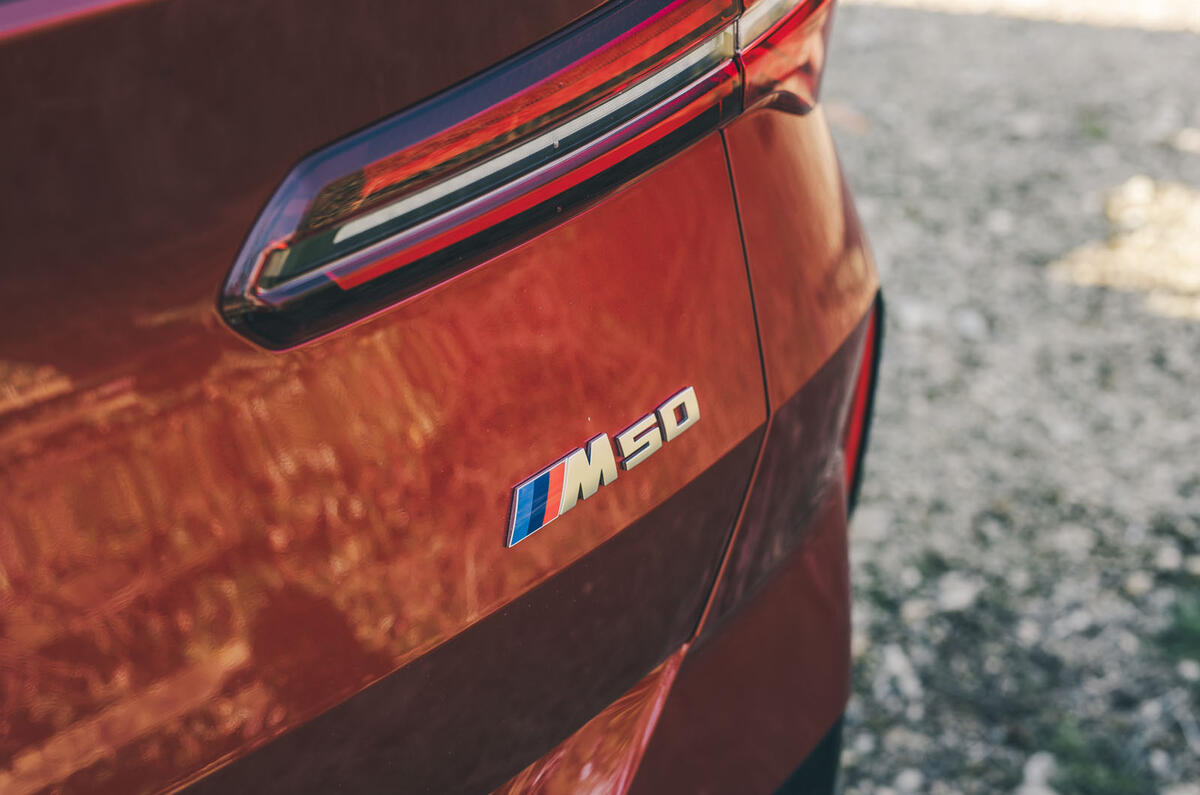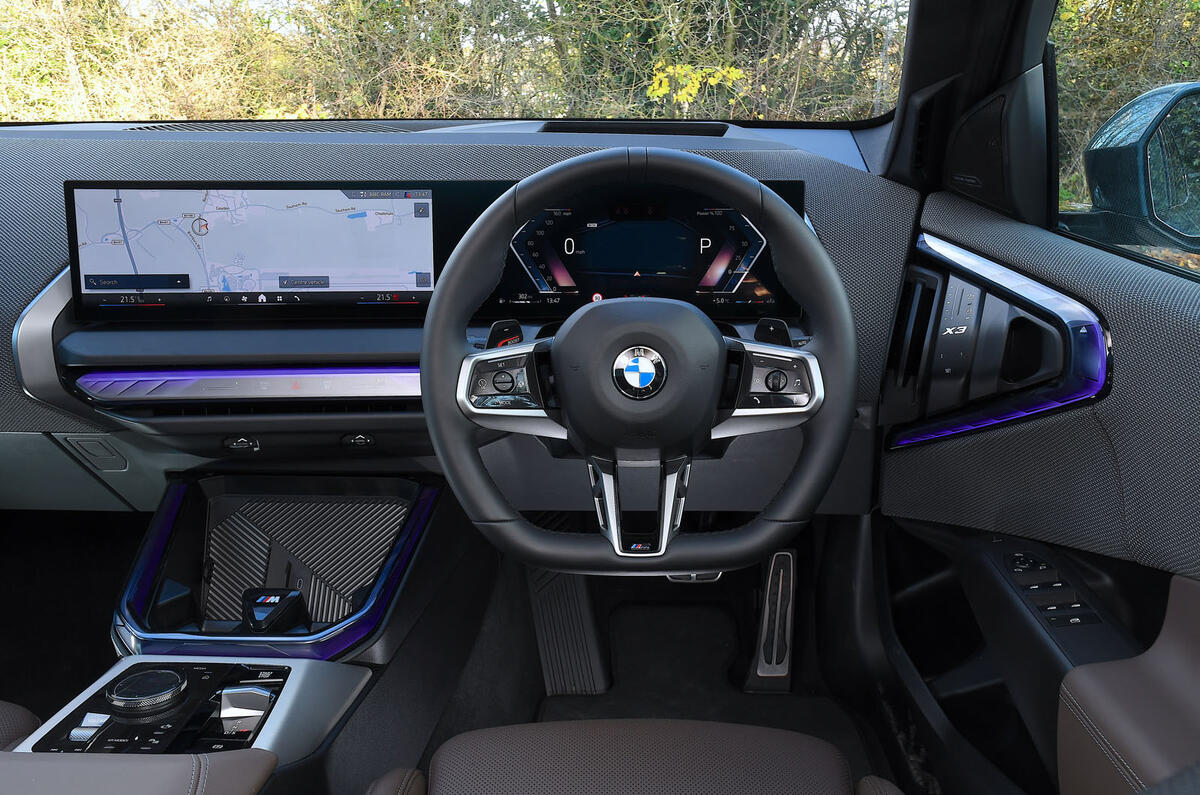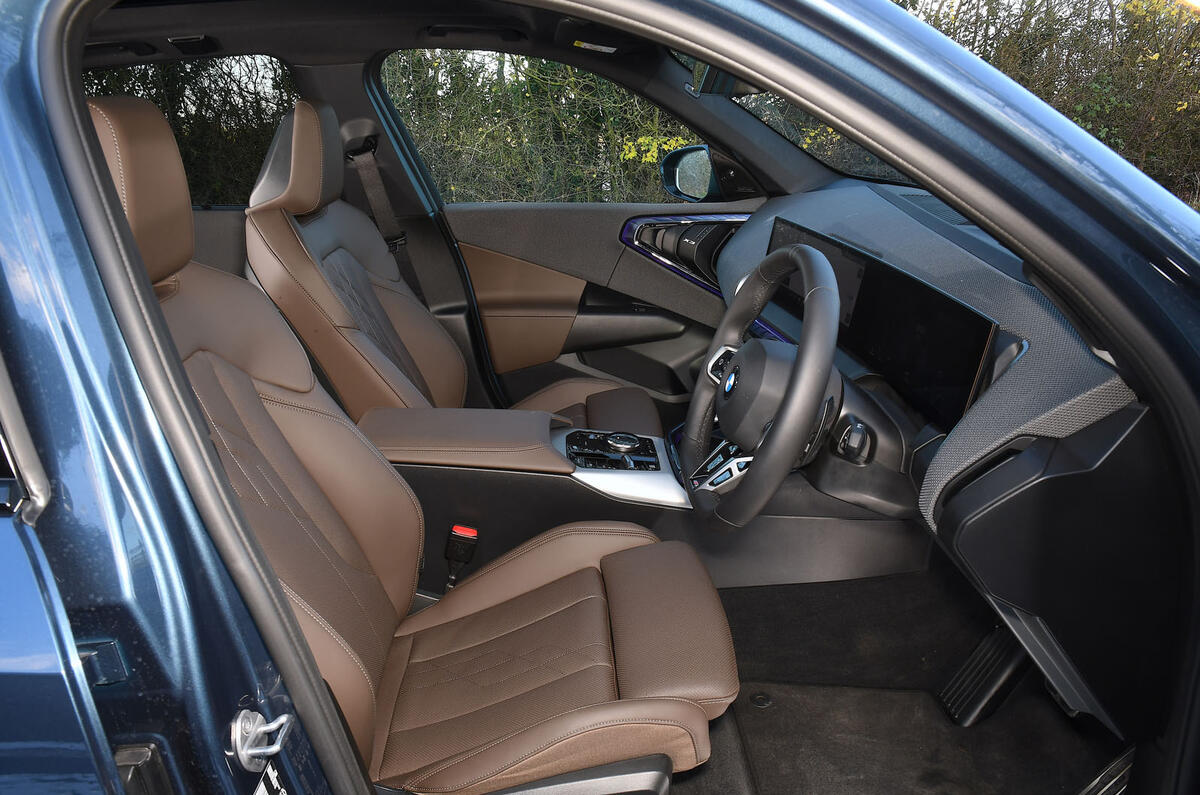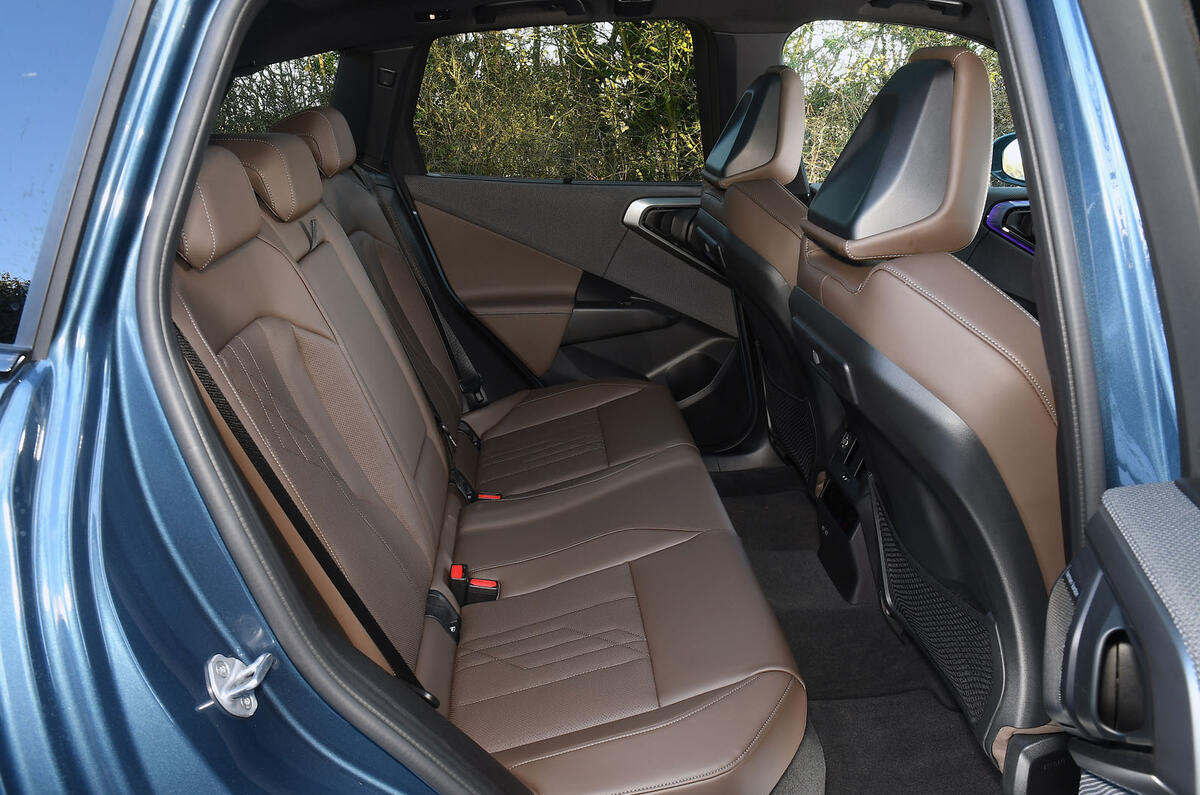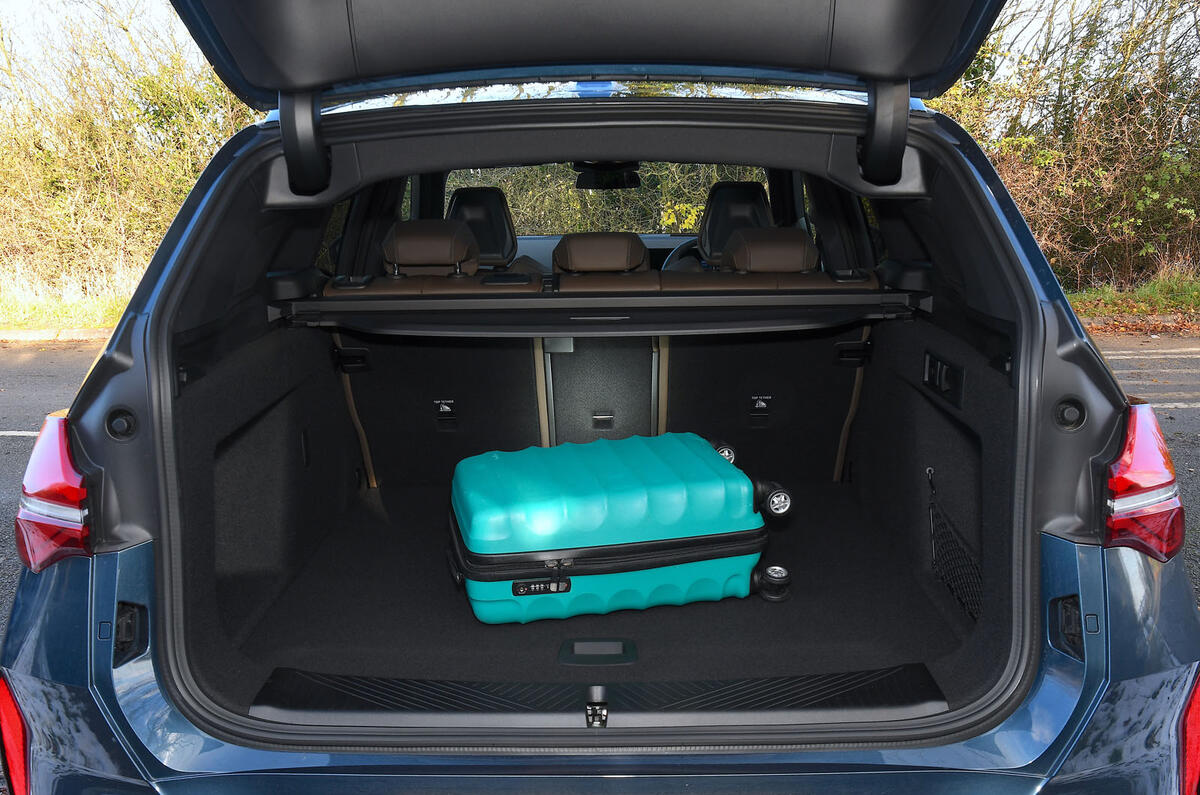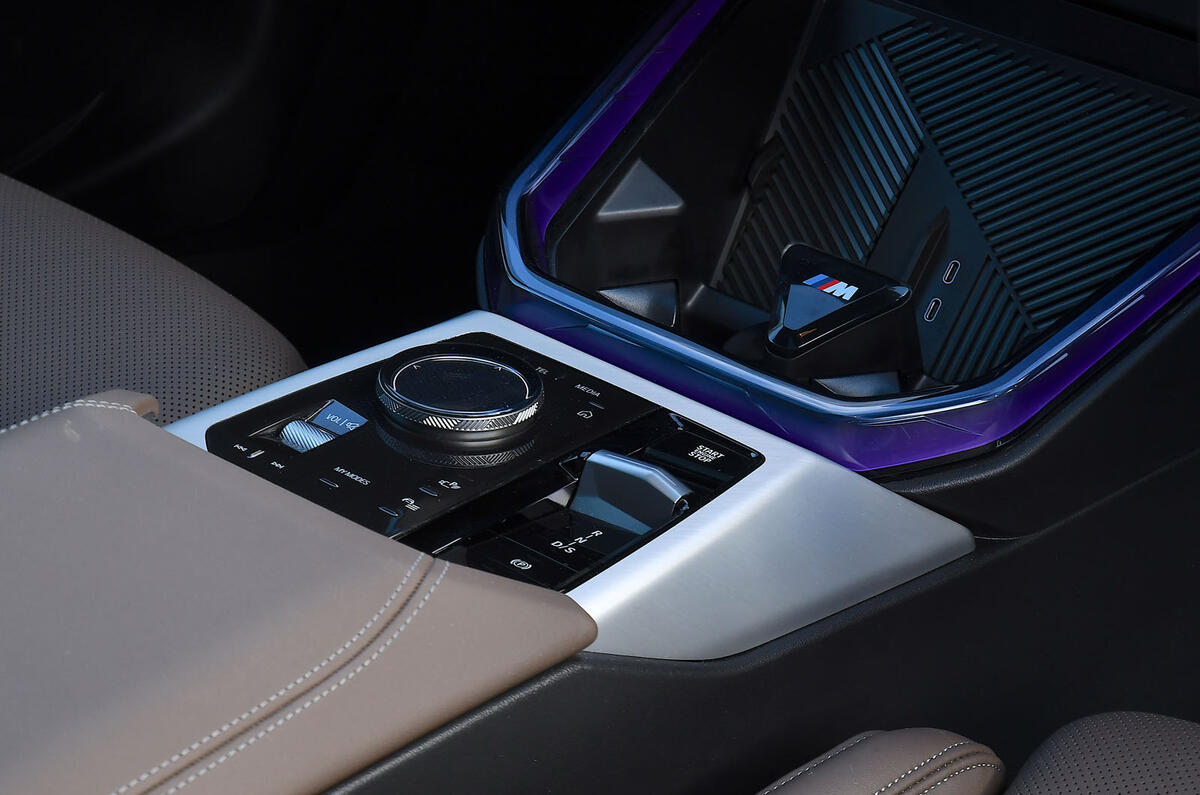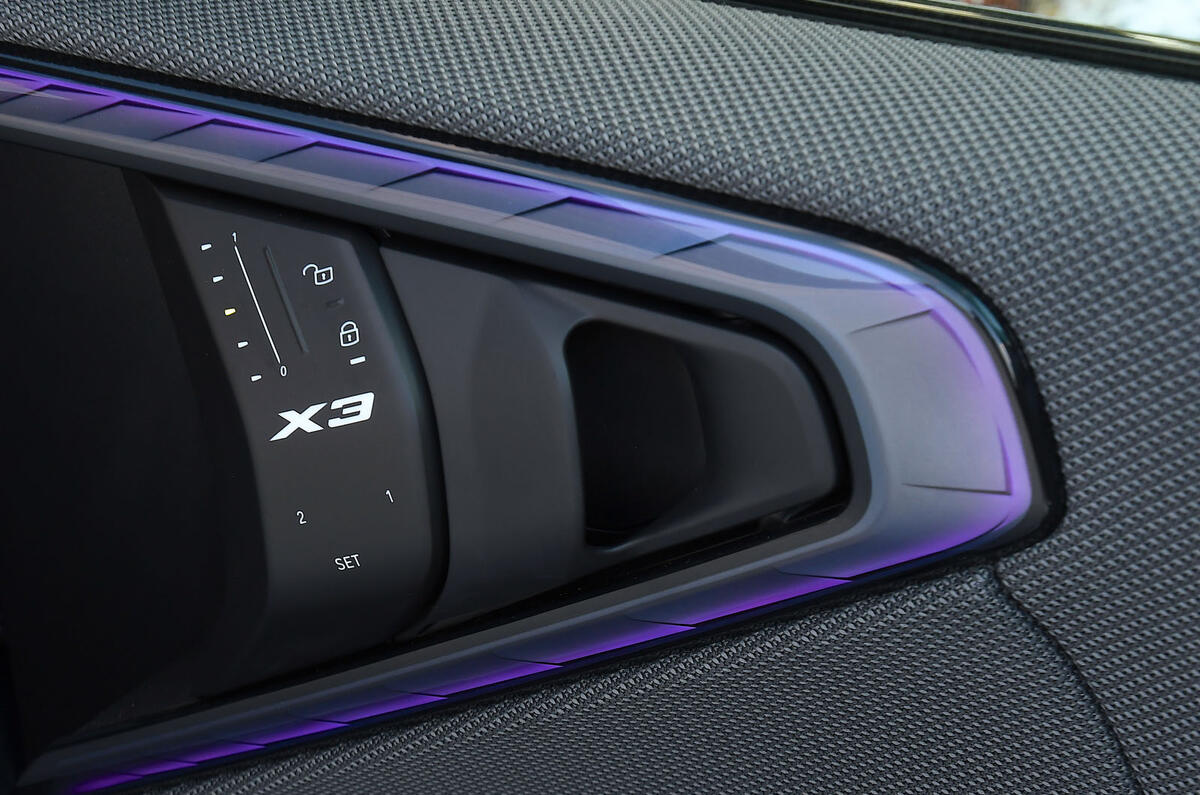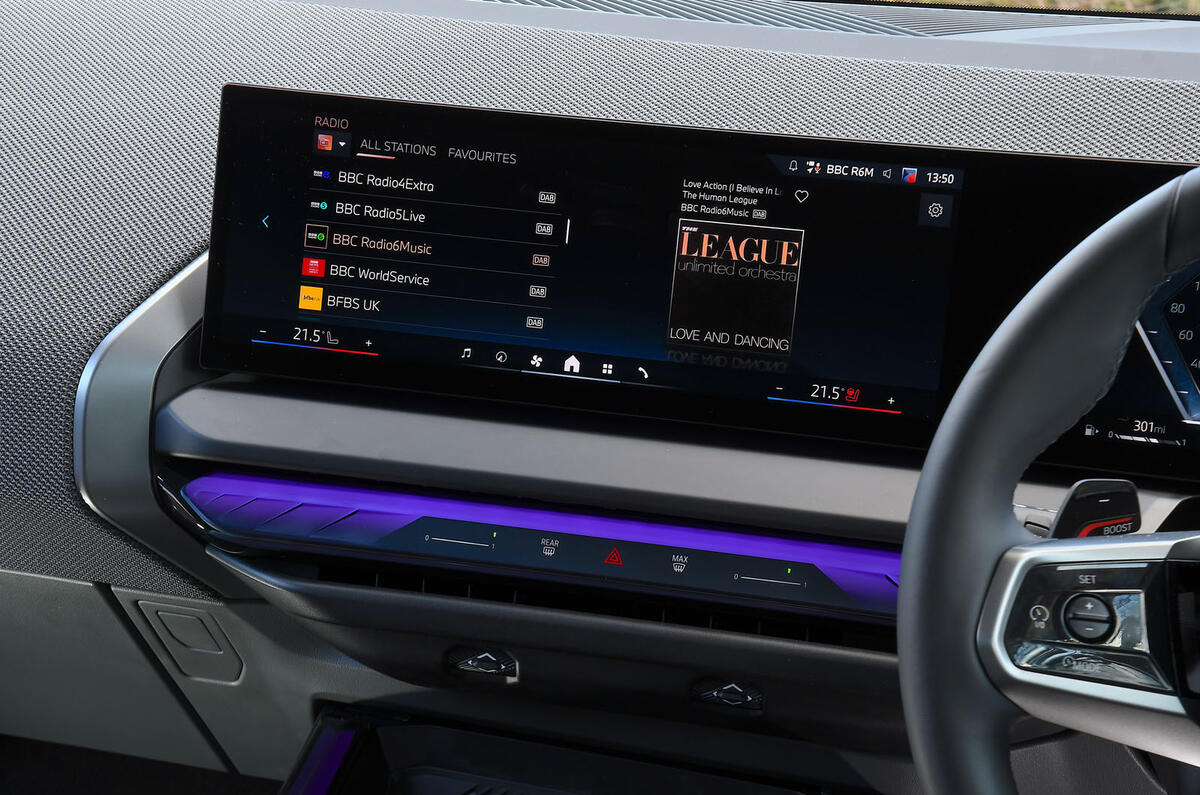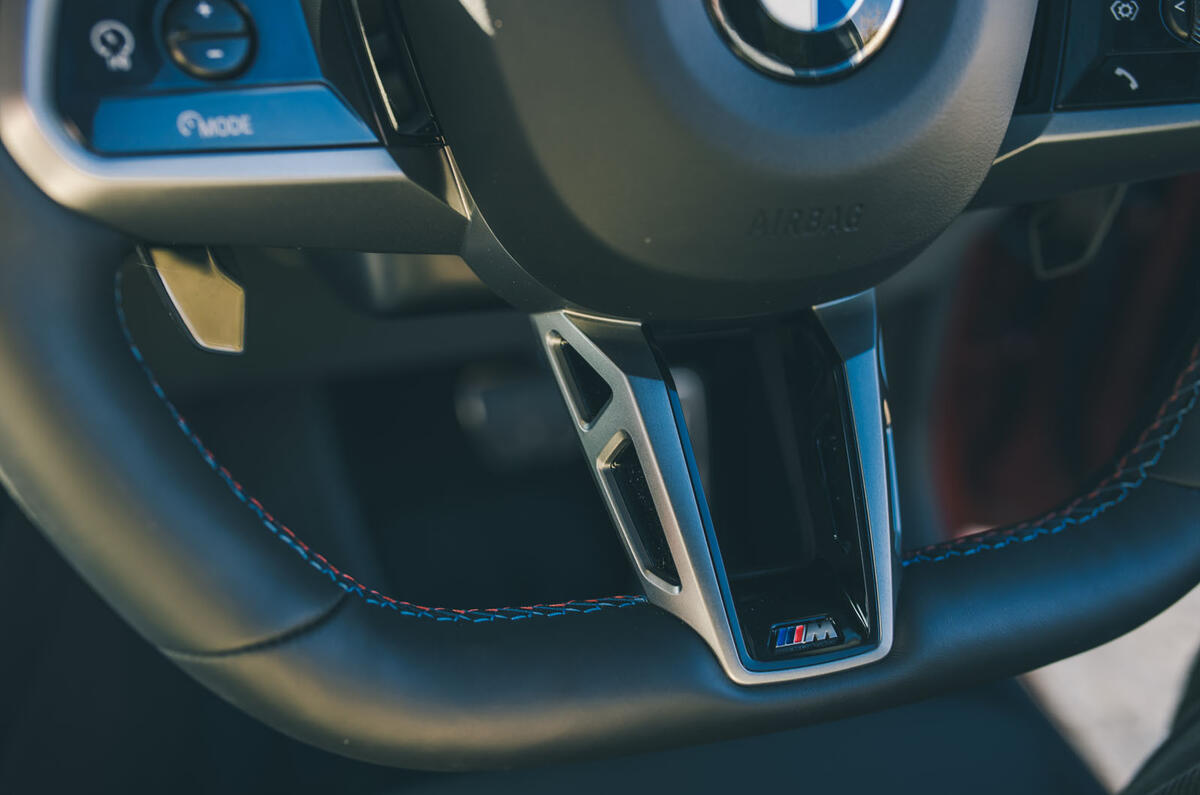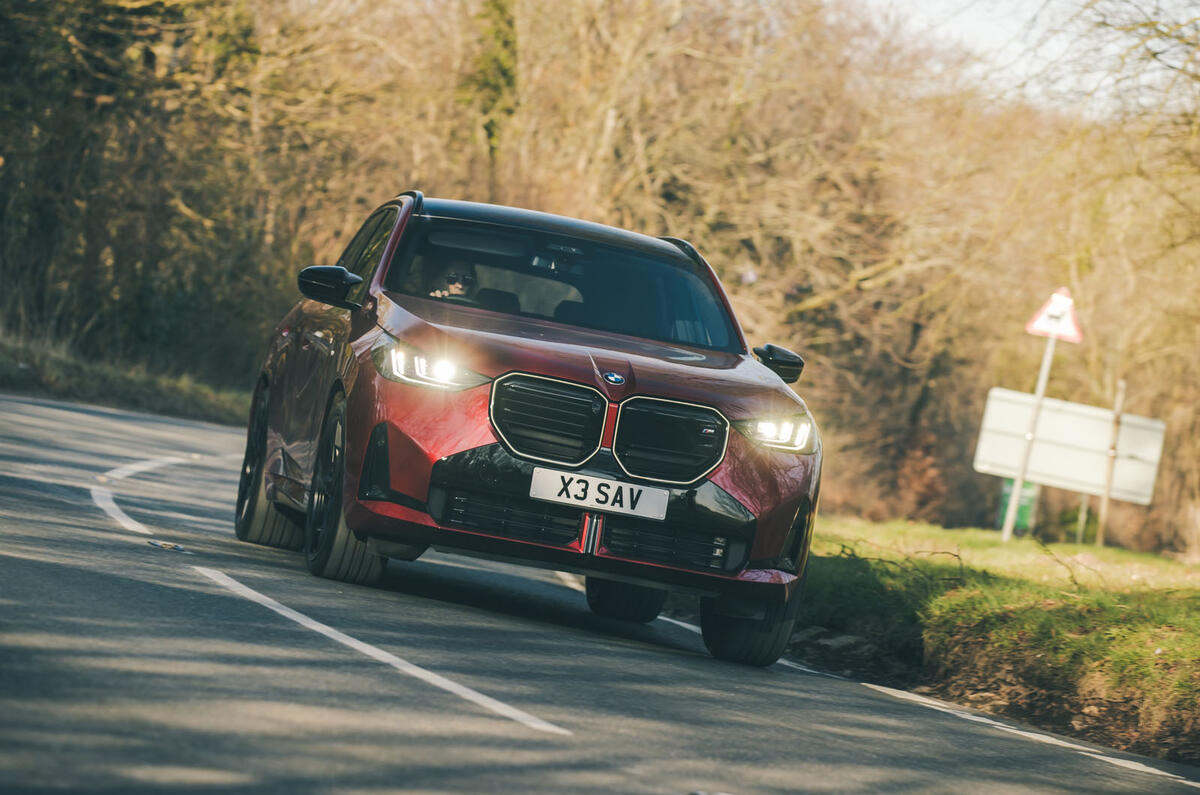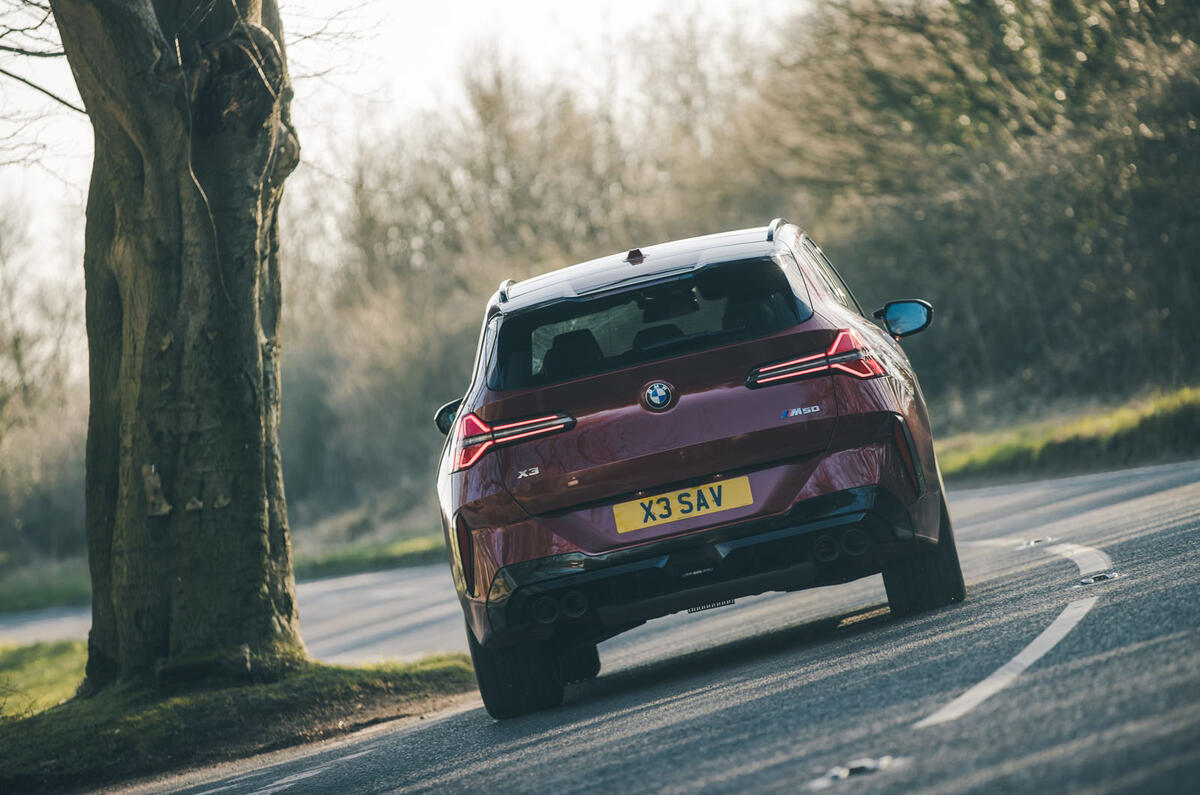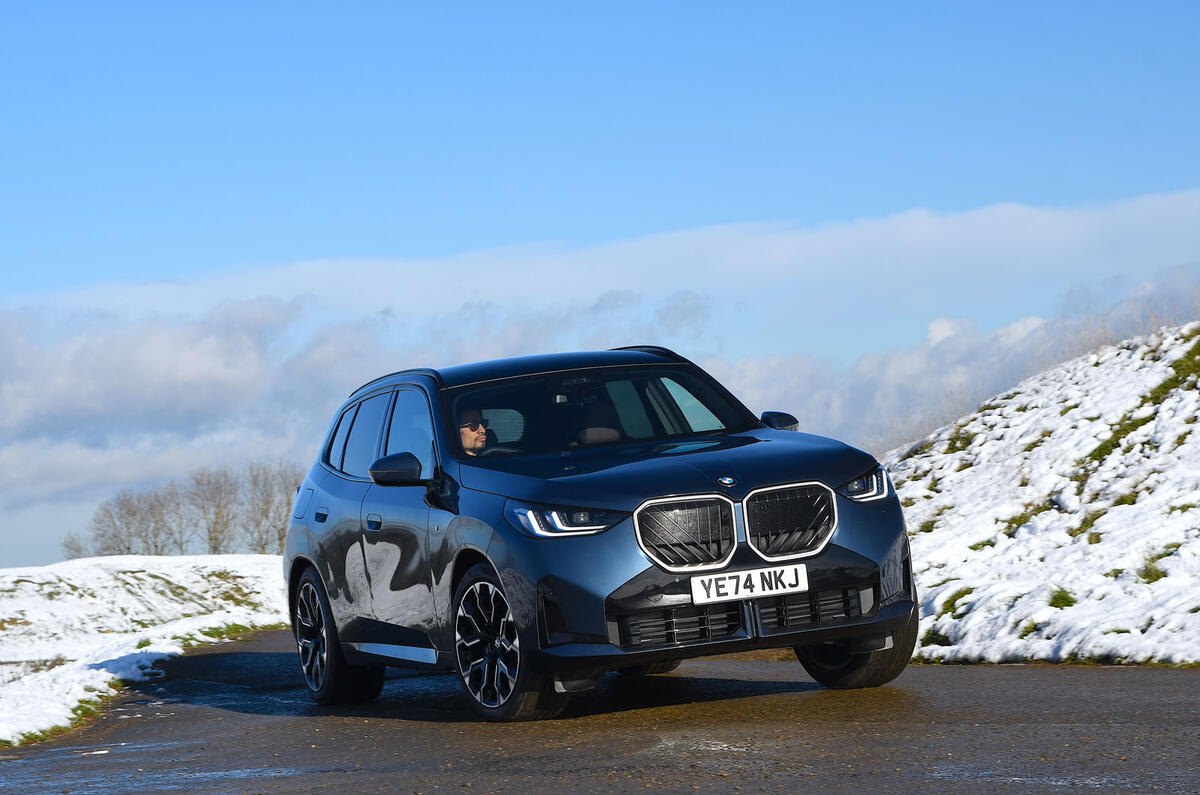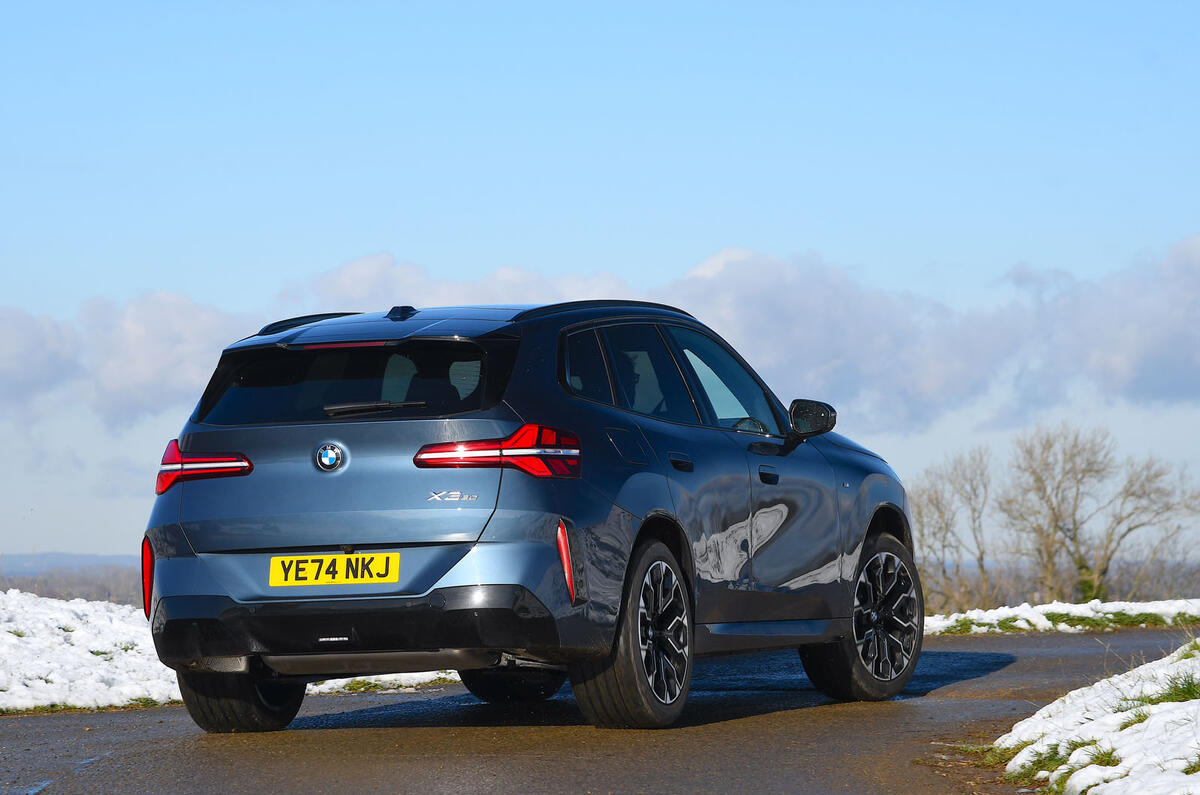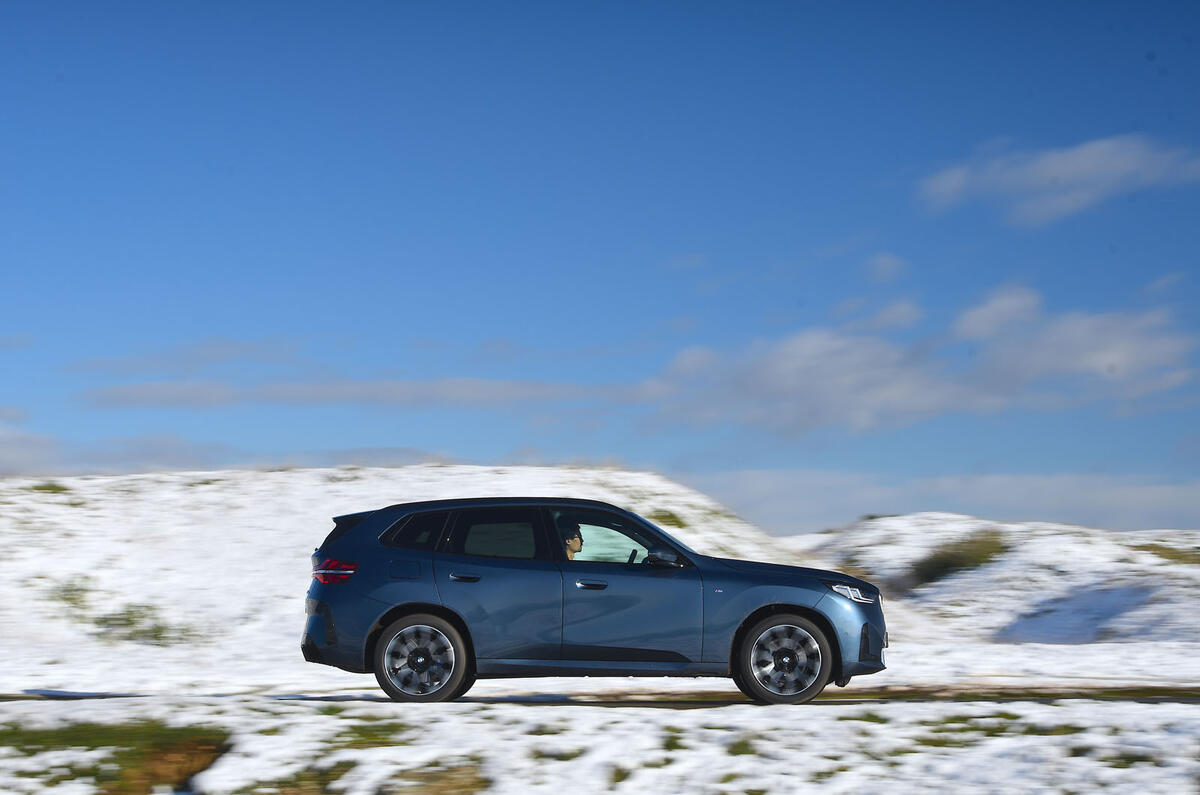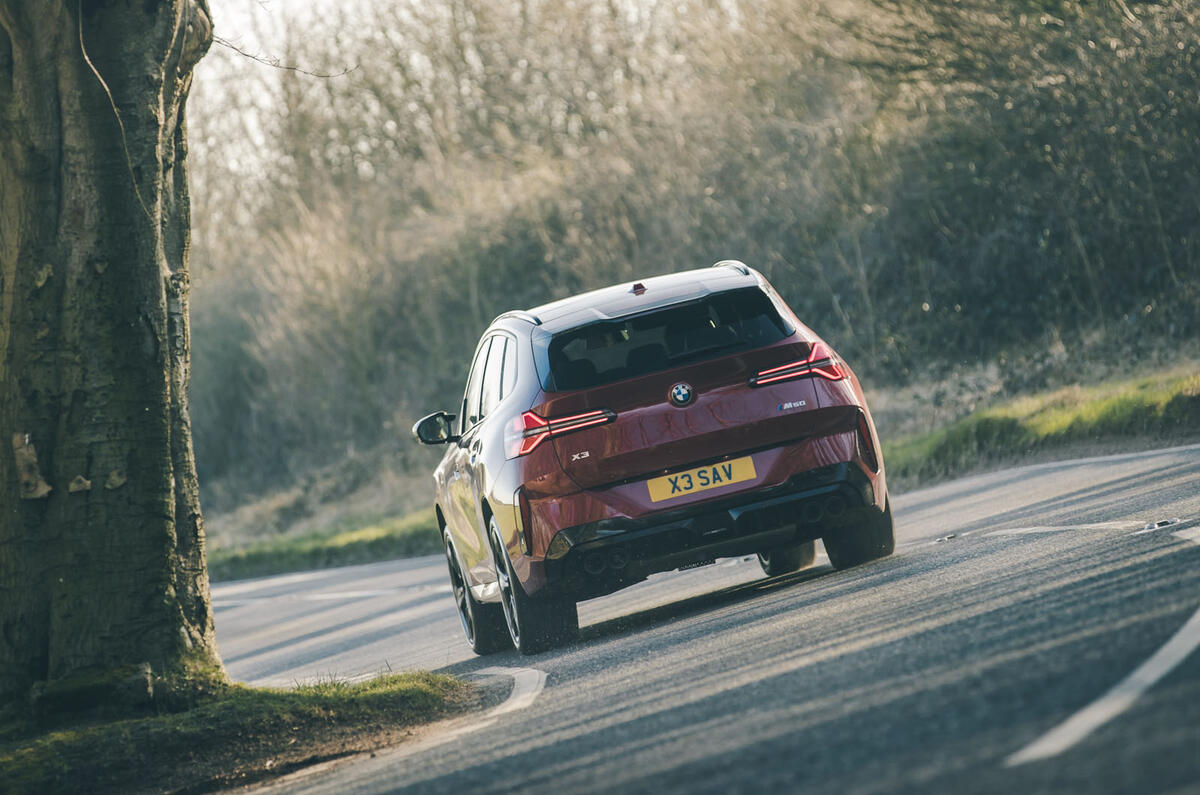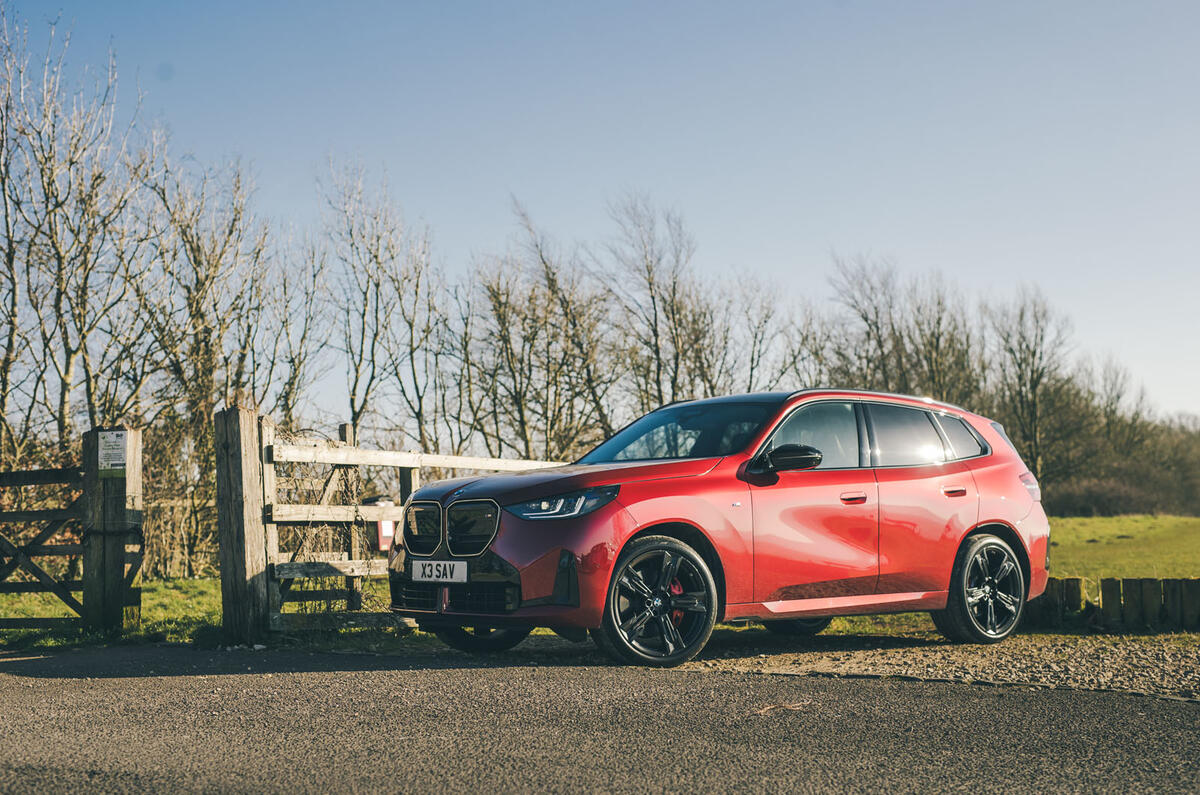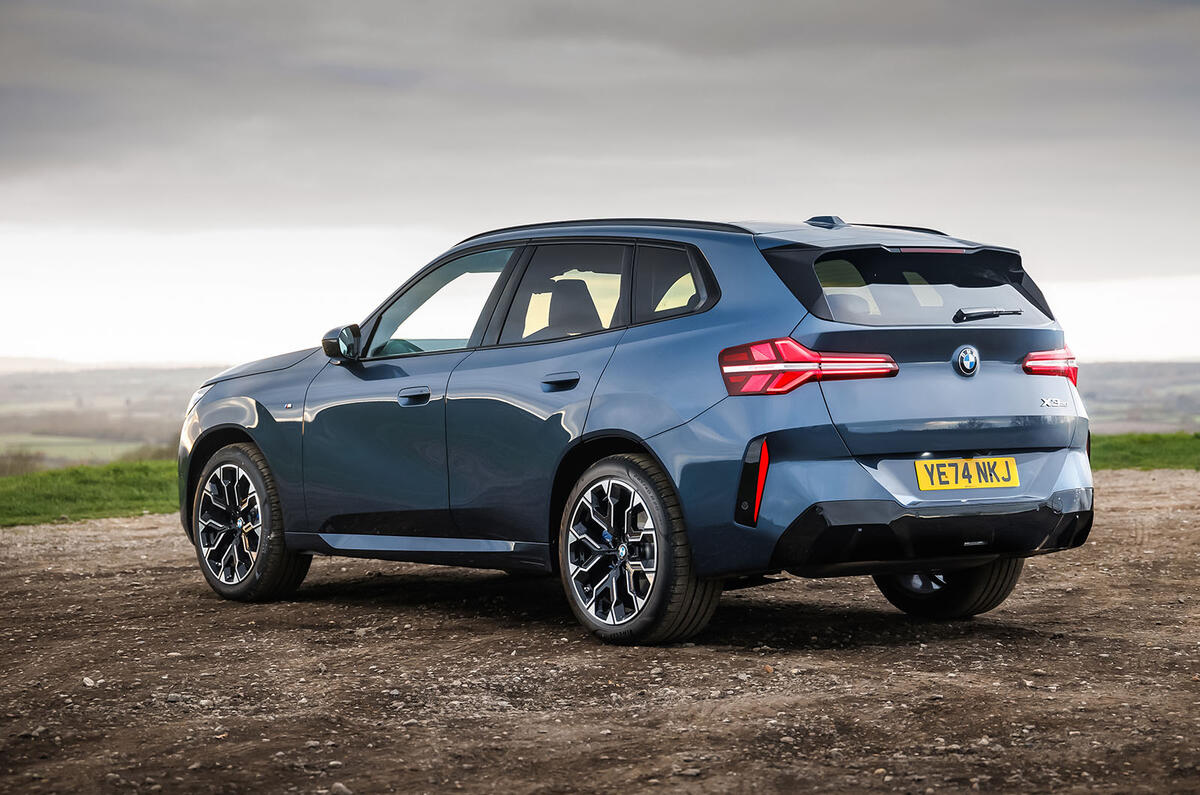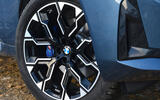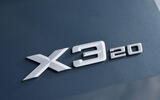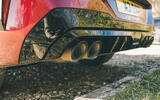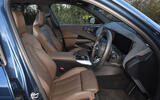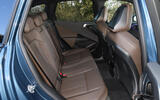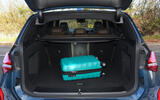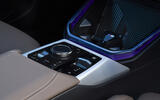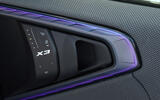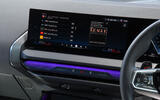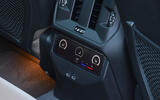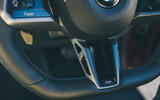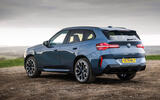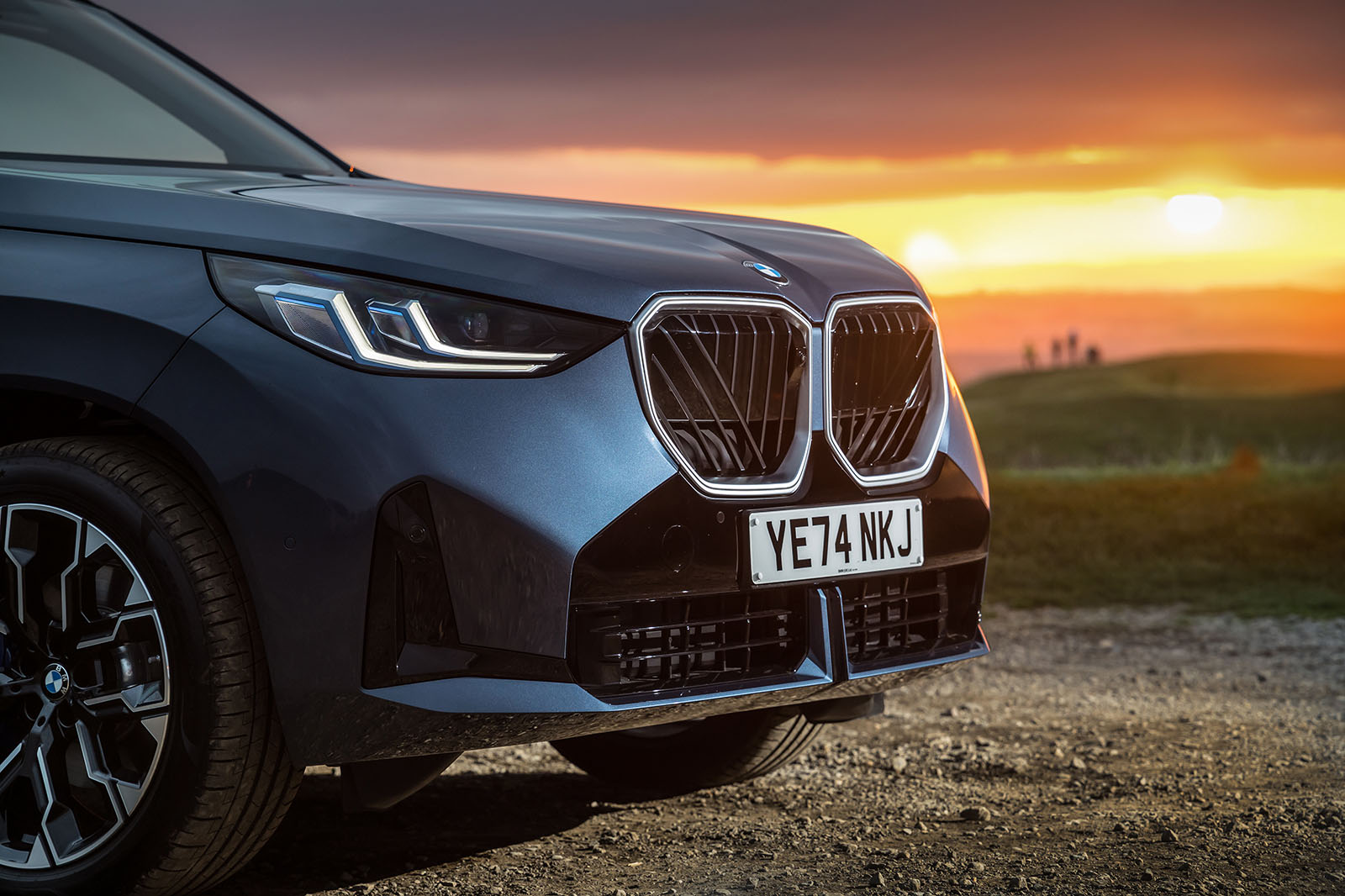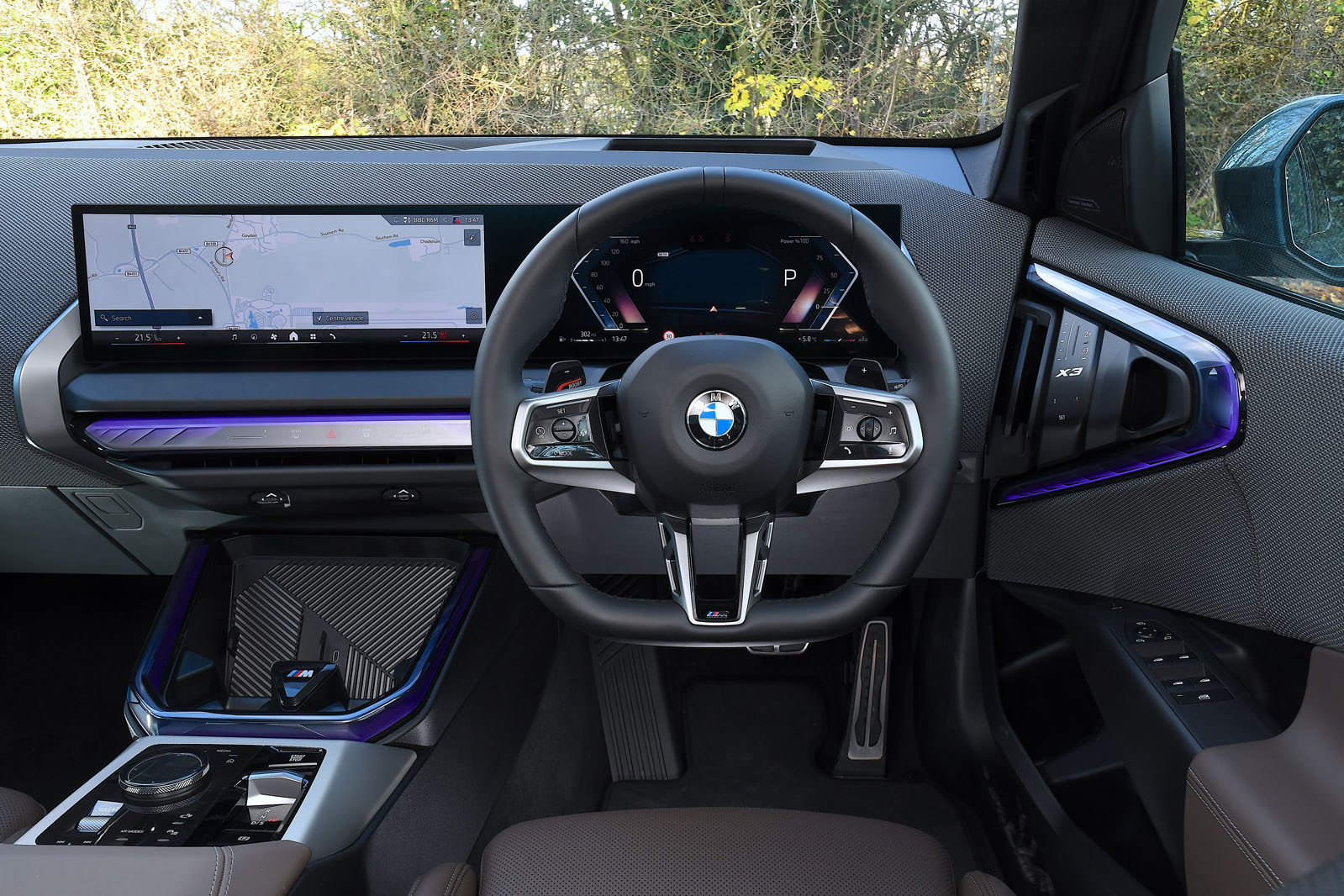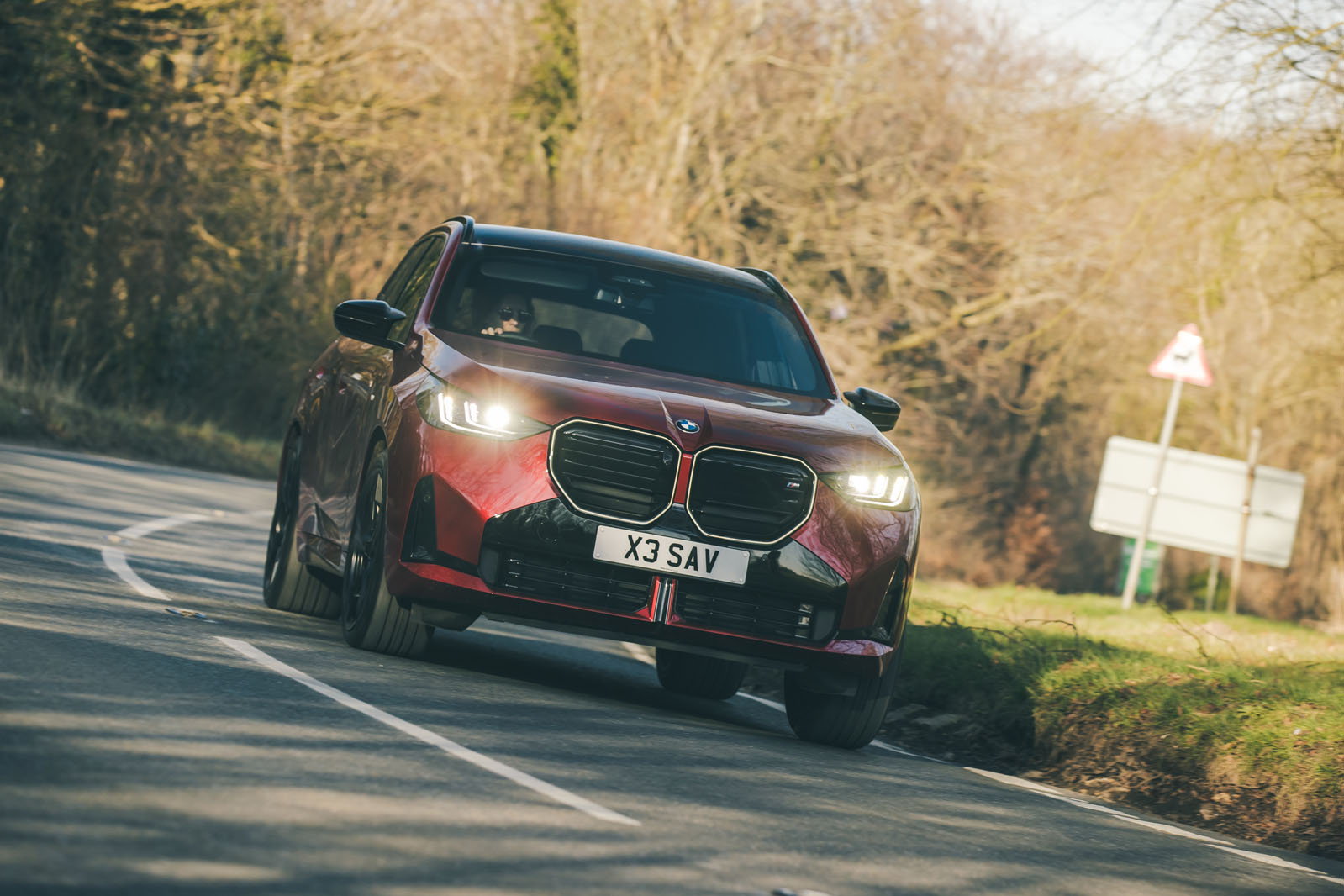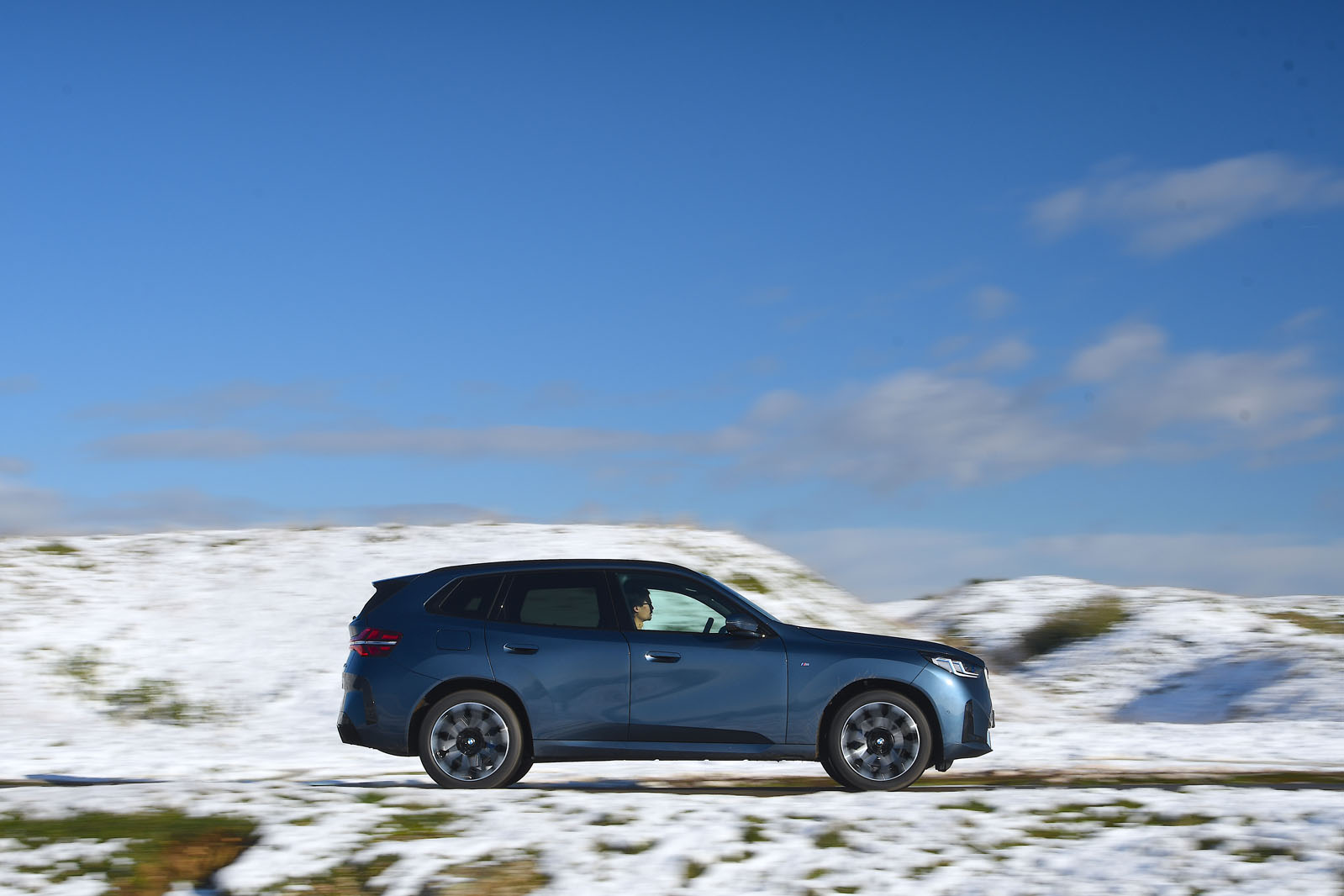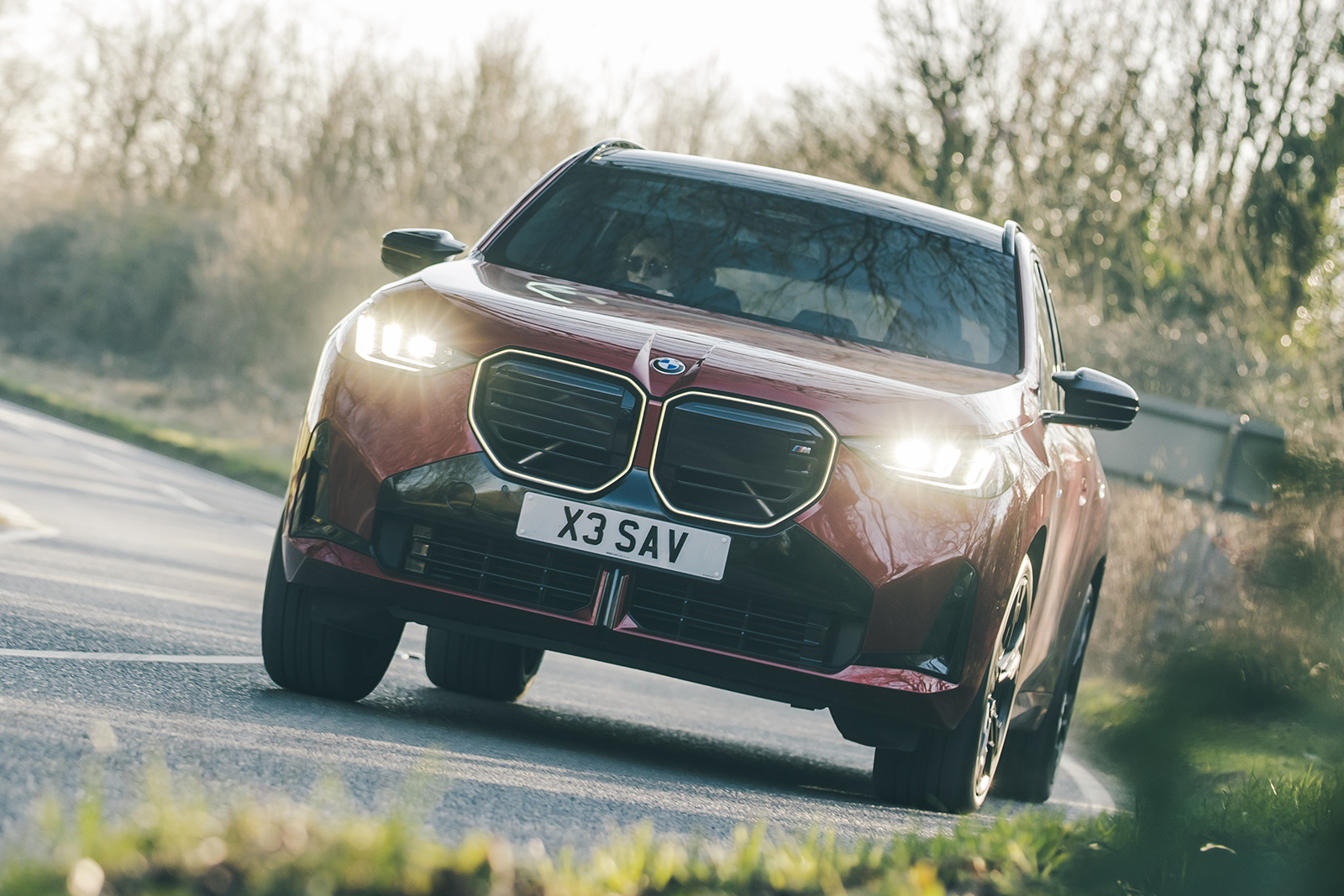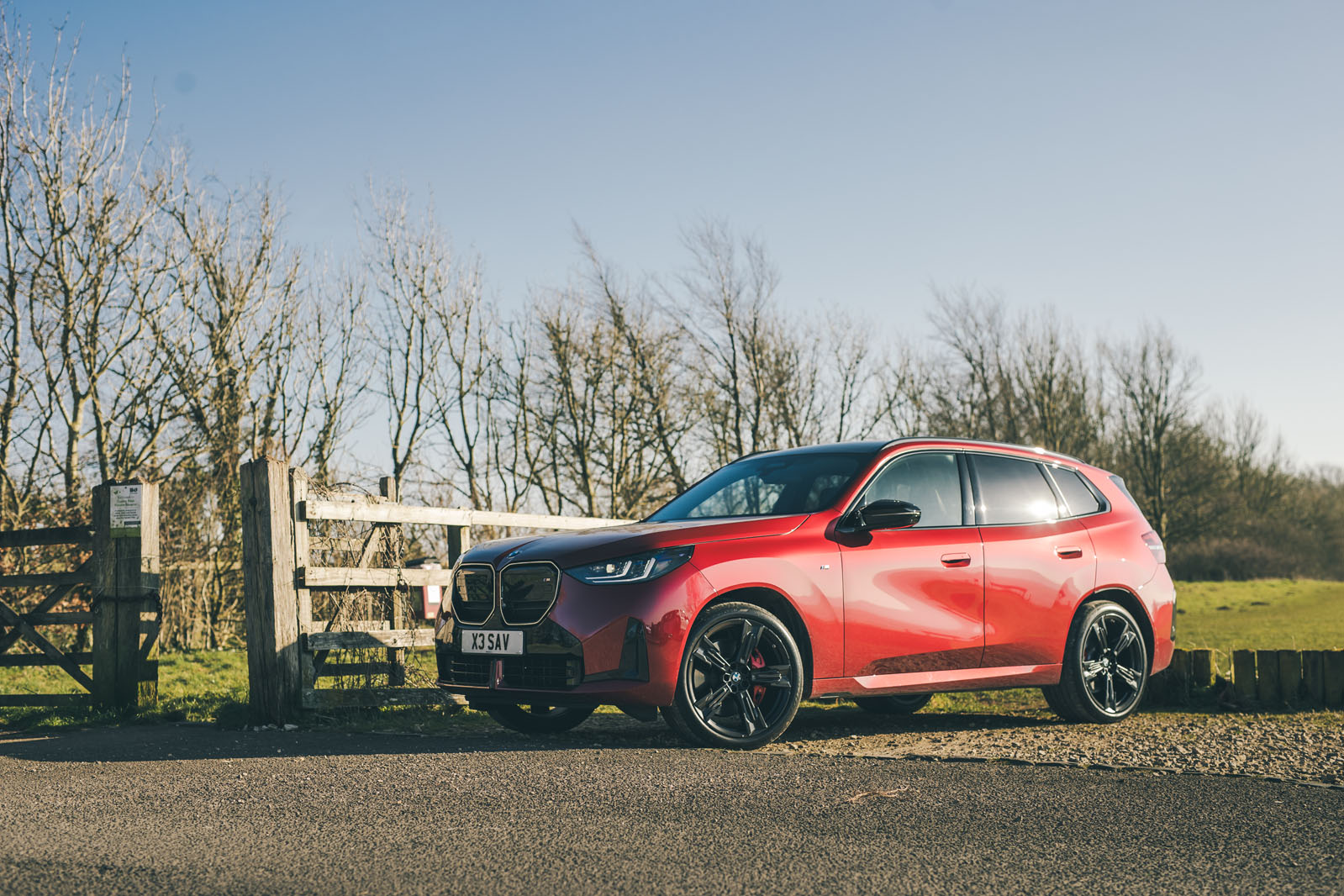Four powertrains will be offered in the UK. The 20 uses a 2.0-litre mild-hybrid four-cylinder petrol unit tuned for 205bhp, while the 20d features a 2.0-litre diesel four, which also gets a mild-hybrid system and puts out 197bhp. The diesel returns an official claimed 43.5-48.7mpg, depending on spec.
The plug-in hybrid 30e is new, using the 2.0-litre four-cylinder petrol unit and an electric motor that’s integrated into the eight-speed automatic gearbox. The combined system output is 295bhp and, depending on spec, it offers an official electric-only range of 50-56 miles, which is a step up on the previous X3. Its battery can be charged at 11kW and it offers favourable official CO2 emissions of 21-26g/km.
So far, we’ve driven the petrol 20 and the more potent M50, which currently sits atop the range, with its output of 393bhp.
The 'B58' straight six in the M50 is arguably one of the best engines on sale today. It's found in everything from the plug-in hybrid X5 xDrive50e to esoterica like the Morgan Plus Six and Ineos Grenadier, and it’s just as adept in the big SUV as it is in the retro sports car. In the off-roader, maybe not so much.
In the X3, it gives ferocious performance in a straight line, feeling every bit as quick as its official 0-62mph time of 4.6sec would suggest. It’s not electric SUV fast, but then an EV doesn’t offer the distinctive and pleasing soundtrack and character of a straight six.
This is a responsive unit that syncs well with the eight-speed automatic gearbox and shifts the X3’s weight with ease. But it’s also smooth and quiet at a more relaxed pace, adding to the premium feel in more urban driving. It's also surprisingly economical, being capable of 38mpg at a motorway cruise. With some more spirited driving in the mix, we averaged 33mpg over the course of a week.
We did note a hesitance in shifting between drive and reverse that didn't use to be present on automatic BMWs.
The 20's engine obviously can’t match the M50's for power or theatre, but it’s also a pleasingly smooth offering that's responsive throughout the power range. The petrol unit is well-mannered even when working quite hard - and, thanks to the powerful electrification, it doesn’t struggle for accessible torque in the way you might expect.
As entry-level engines go, it’s amply powerful and surprisingly well-suited (although, returning only about 35mpg on our test route, it’s not especially economical).
Sticking to an overhauled and improved model platform and engine range certainly seems to have allowed BMW to enhance the X3’s refinement levels. Both the M50 and the 20 M Sport that we test drove really impressed with their mechanical isolation, all-round smoothness and fine drivability.
The mild-hybrid system in both does allow the engine to shut down and restart a fair bit at town speeds, but it happens very smoothly and quietly indeed.





